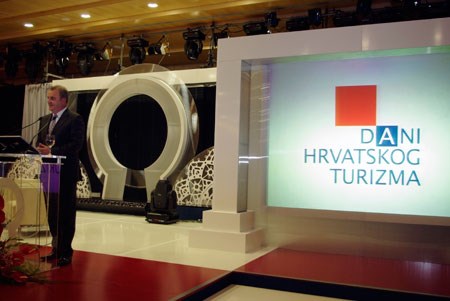- Published: 19.10.2012.
Working draft of master plan for development of Croatian tourism presented
A working draft of the master plan and strategy for the development of Croatia's tourism by 2020 was presented on Friday at the ongoing Croatian Tourism Days in Dubrovnik, with an emphasis on plans for making headway in the quality of services and in differentiation of products, on extension of the high season, and also on plans for upgrading the education of workers in the tourist trade and attracting more investments.
Tourism Minister Veljko Ostojic called on all interested parties to forward their opinions and suggestions to the ministry in next 30 days so that this version of the master plan could be elaborated into the final draft on some 100-120 pages. Thus, the master plan could be put on the government's agenda soon so that it could be adopted by the parliament by the end of this year.
This document should offer answers about long-term management of the country's tourist industry which will be also environmentally friendly, the minister said at the presentation in the Valamar Lacroma Hotel in Dubrovnik where nearly 1,000 participants gathered for the DHT event.
One of the biggest challenges is what to do with private accommodation, which currently accounts for 47% of the total accommodation capacity for tourists in Croatia, Ostojic said, proposing that those small-scale providers of private accommodation should be consolidated, and publicised as a brand name and turn into family-run small hotels and bed and breakfast facilities.
Until 2020 Croatia should have 100 more hotels and eight more resort compounds, as well as seven golf courses, five amusement parks, 5,000 new berths, and seven more camping sites so as to attract 20 million holiday-makers and register much more overnights.
The present draft of the master plan also envisages the division of Croatia into three macro-regions for the purposes of the tourist trade: the interior (continental) region, the South Adriatic and the North Adriatic, with 10 subregions which each should develop 30 specific tourist products, said Sinisa Horak of the Croatian Institute of Tourism, explaining that it was in accordance with the European Union regions.
Some of those specific products will be nautical tourism, health tourism, rural tourism, adventure, business, social or youth tourism, he said.
In order to achieve this, it is necessary to eliminate numerous barriers such as a poor investment climate or excessive administration.
Horak said that in 2010, a total of 51 million tours by domestic and foreign guests brought about UR 7.3 billion, with domestic guests accounting for one billion euros.
It is the first time to show tourism earnings in this way, Horak said. (Hina)
